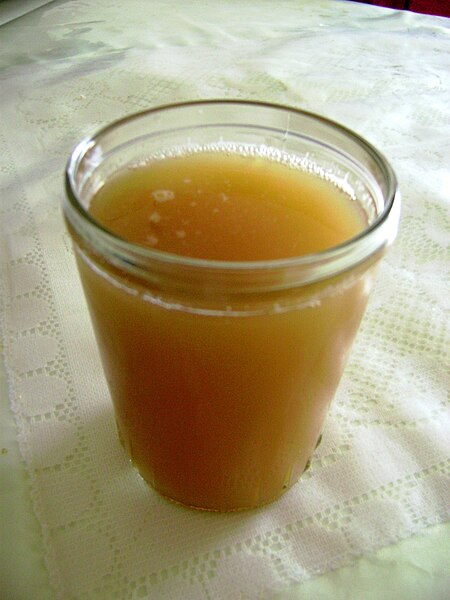Chicha is a fermented (alcoholic) or non-fermented beverage of Latin America, emerging from the Andes and Amazonia regions. In both the pre- and post-Spanish conquest periods, corn beer made from a variety of maize landraces has been the most common form of chicha. However, chicha is also made from a variety of other cultigens and wild plants, including, among others, quinoa, kañiwa, peanut, manioc, palm fruit, rice, potato, oca, and chañar. There are many regional variations of chicha. In the Inca Empire, chicha had ceremonial and ritual uses.
A jug of chicha morada served with pipeño, Olmué, Chile.
Chicha served at the yearly Fiesta del Huán, to celebrate the December solstice at the Sun Temple in Sogamoso, Boyacá, Colombia.
Model tray for making chicha, Peru, Chancay-Chimu, north central-coast, c. 1400 AD, silvered copper, Krannert Art Museum
A glass of chicha de jora, a type of corn beer
The Inca Empire, called Tawantinsuyu by its subjects, was the largest empire in pre-Columbian America. The administrative, political, and military center of the empire was in the city of Cusco. The Inca civilization rose from the Peruvian highlands sometime in the early 13th century. The Spanish began the conquest of the Inca Empire in 1532 and by 1572, the last Inca state was fully conquered.
Manco Cápac, First Inca, 1 of 14 Portraits of Inca Kings, Probably mid-18th century. Oil on canvas. Brooklyn Museum
An Inca prince accompanied by nobles, priests and warriors
The first image of the Inca in Europe, Pedro Cieza de León, Crónica del Perú, 1553
Sapa inkakuna, a 17th-century Cusco painting with the Inca lineages mentioned by colonial chronicles and their relationship with the royal queens of Cusco, which hide behind a complex representation of the Inca social organization.








